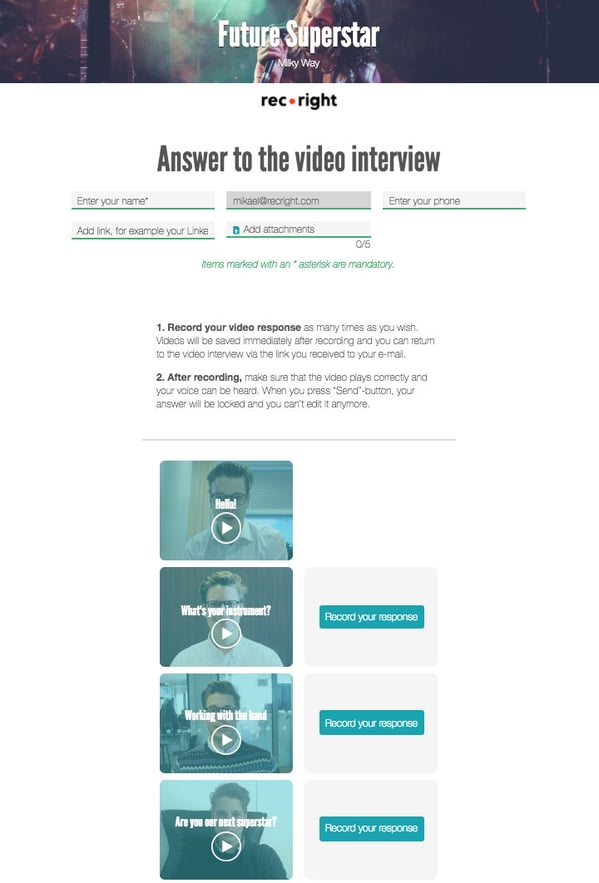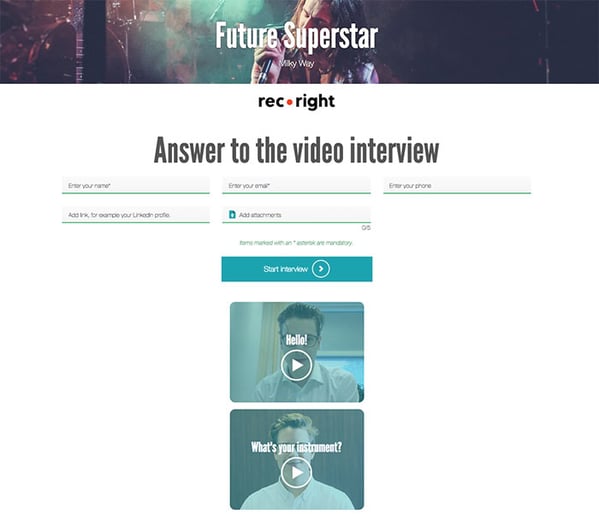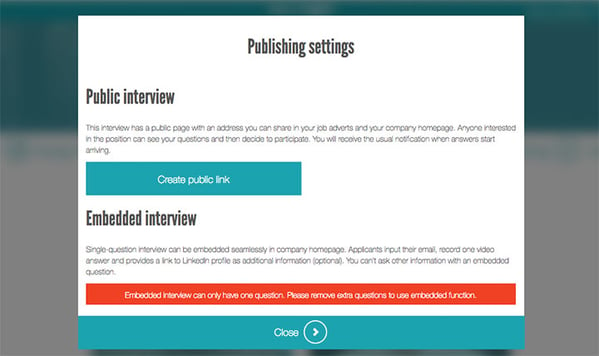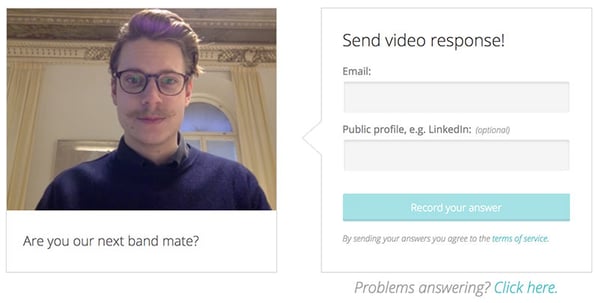
Miikka Tuomola

Did you know there are three different ways to do a recorded video interview? Most of you are likely familiar with the so-called traditional video interview, or as you probably know it, video interview, where candidates have been selected beforehand and video questions are pre-recorded. The other two options - public video interview and embedded video interview - are not so well-known, but are becoming more popular by the day. Next, I will briefly explain to you the difference between these three concepts and when you should use them:
You have received candidates’ applications probably either through email or an Applicant Tracking System. Your next step is to screen the candidates and decide who you are going to invite to the next round. Here is where the traditional video interview comes into play. You can now pick, say, one in three candidates, and invite them to a video interview. So process-wise traditional video interview follows the initial screening of the candidates. The next step from here is to pick the best candidates for a personal interview.
Traditional video interviews are the most common recorded video interview type. Most video interview providers provide such an option. It’s a perfect option for your everyday recruiting and becomes a time saver when you have more than ten candidates per position. There is no limit for the maximum number of candidates, but a good practice with larger candidate pools is to interview about a third of your applicants using pre-recorded video interviews. With smaller candidate pools you should consider including everyone.

Here is a typical candidate view
Public video interviews are open for everyone and can even replace a job ad. Here you can find an example of a public video interview and try it for yourself. Via public interviews, all interested candidates can apply for a job.
Here is how it works:
When should you use public video interviews? Whenever. In practice, it’s most commonly used in large recruiting campaigns, especially when recruiting millennials but, of course, this doesn’t mean that it cannot be used elsewhere!
Public video interviews are a perfect option if you are active in social media, as potential candidates may follow you already. It’s also a sure way to appear as a modern recruiter in the first stage of the recruiting process.
|
Read more: Learn how to start working on your employer brand. |

Public interview will appear to the candidates like this. After filling the details and clicking "Start interview", "Record your response" buttons will appear
Embedded video interviews are exactly what they sound like; a video interview that is embedded to another page. In an embedded video interview, you create only one video question. Anyone can apply through embedded video interviews. In that sense, they are very similar to public video interviews. Via embedded video interviews candidates can leave one video answer, their email address, and an optional LinkedIn link. Embedded video interviews are a perfect option when your recruiting needs are lighter.

Both Public video interview and Embedded video interview can be launched from the Publishing Settings
You can, for example, embed the video question on your application form, so with the written application and attachments, you will also receive a short video introduction of the candidate. Embedded video interviews can also be integrated on the application form in selected Applicant Tracking Systems. Another way to benefit from embedded video interviews is to use them for open applications.

You can embed the video interview almost anywhere!
Although there are some differences between these three types, there are also many similarities:
With traditional video interviews and public video interviews, you can also require the candidates to include attachments alongside their video interviews (such as a CV, a cover letter, etc.).
Download our ebook to learn about how you can make your recruitment more efficient with videos!
Get recruitment insights, tips, and best practices delivered to your inbox monthly!